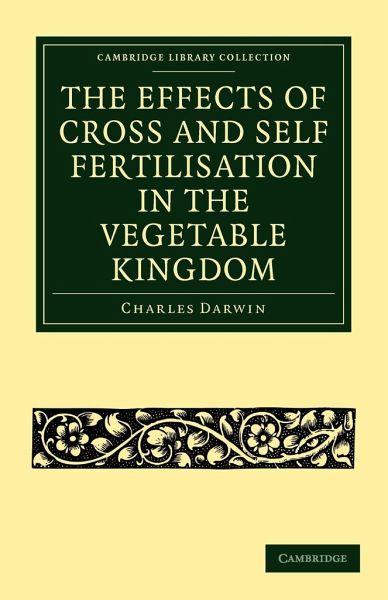
The Effects of Cross and Self Fertilisation in the Vegetable Kingdom
Versandkostenfrei!
Versandfertig in 1-2 Wochen
52,99 €
inkl. MwSt.
Weitere Ausgaben:

PAYBACK Punkte
26 °P sammeln!
Darwin's detailed study of the different effects of cross- and self-fertilisation in plants.




